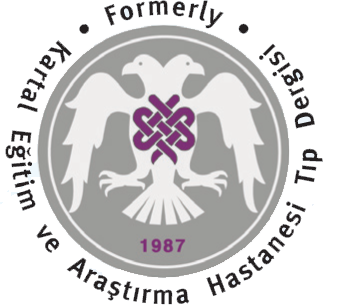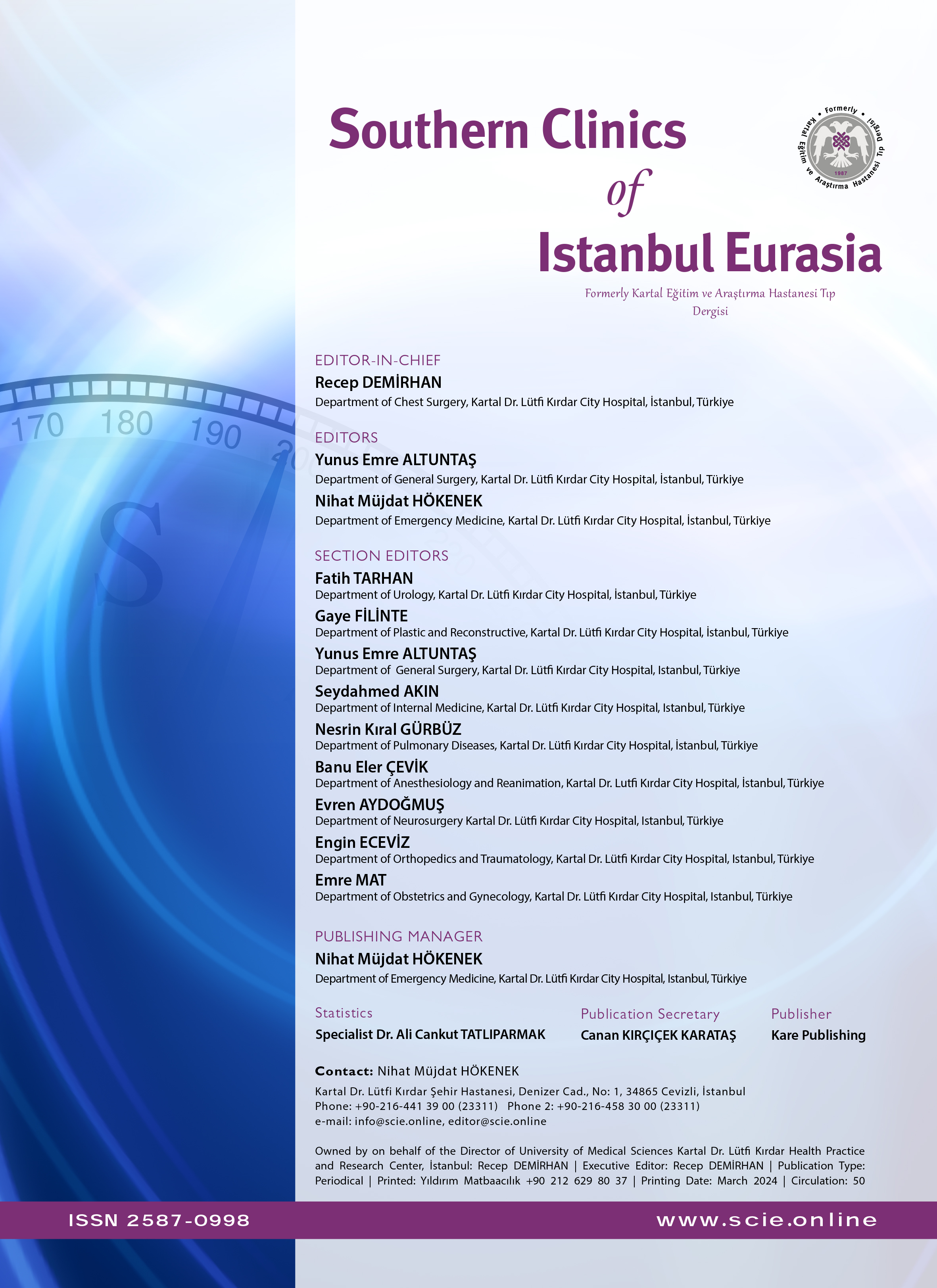Monocanalicular and Bicanalicular Silicone Tube Intubation Results in Patients With Congenital Nasolacrimal Duct Obstruction
Özlen Rodop Özgür1, Berkay Akmaz2, Baran Kandemir1, Ümit Çallı1, Yusuf Özertürk11Department of Ophthalmology, Kartal Dr. Lütfi Kırdar Training and Research Hospital, İstanbul, Turkey2Department of Ophthalmology, Katip Çelebi University Atatürk Training and Research Hospital, İzmir, Turkey
INTRODUCTION: This study aims to compare the retrospective results of patients on whom silicone intubation was performed using either the monocanalicular or bicanalicular method and for whom probing and lavage procedures had failed for the treatment of congenital nasolacrimal duct obstruction (CLDO).
METHODS: A total of 47 eyes of 42 patients 25 females; 17 males on whom silicone tube intubation was performed due to congenital nasolacrimal duct obstruction (CLDO) were involved in the study. As part of the study, a monocanalicular tube was placed in 23 of the 47 eyes (1st group), while a bicanalicular tube was placed in 24 of the eyes (2nd group). The average age in the first group was 6.13 years (115 years) and 4.51 years (115 years) in the second group. Extubation was performed in the postoperative 4.2 month (27 months) in the first group and in the postoperative 4.4 month (27 months) in the second group. Average length of follow-up of cases was determined to be 10.1 months (672 months).
RESULTS: The procedure had a success rate of 82% (19 of 23 eyes) in the first group, while the success rate of the procedure conducted in the second group was 79% (19 of 24 eyes), with the difference between the groups determined not to be statistically significant (p=0.76)(Kikare Test). Premature removal of tube was seen in three cases in the first group, with two patients having to be re-intubated and the other not having to be due to the absence of any more complaints. Tube prolapsus from the medial canthal region was seen in two patients from the second group in the second week after operation, resulting in them being extubated in the early period. Pyogenic granuloma was seen in one case in the first group and conjunctivitis in another case in the same group. However, no conjunctival or corneal complications were determined in either patients.
DISCUSSION AND CONCLUSION: The success rate of monocanalicular and bicanalicular silicone tube intubation in patients who had undergone an ineffective probing procedure was determined to be similar, and there was no difference found between the two procedures in terms of their complication rates.
Doğumsal Nazolakrimal Kanal Tıkanıklığı Olan Olgularda Monokanaliküler ve Bikanaliküler Silikon Tüp Entübasyon Sonuçları
Özlen Rodop Özgür1, Berkay Akmaz2, Baran Kandemir1, Ümit Çallı1, Yusuf Özertürk11Dr. Lütfi Kırdar Kartal Eğitim Ve Araştırma Hastanesi, Göz Hastalıkları Kliniği, İstanbul2Katip Çelebi Üniversitesi Atatürk Eğitim Ve Araştırma Hastanesi, Göz Hastalıkları Kliniği, İzmir
GİRİŞ ve AMAÇ: Doğumsal nazolakrimal kanal tıkanıklığında (DNLKT) sondalama ve lavaj işleminin basarısız olduğu ve monokanaliküler veya bikanaliküler yöntem ile silikon entübasyon uygulanmış olguların geriye dönük sonuçlarını karşılaştırmak.
YÖNTEM ve GEREÇLER: Doğumsal nazolakrimal kanal tıkanıklığı (DNLKT) nedeniyle silikon tüp entübasyonu yapılan 25'i kız,17'si erkek 42 olgunun 47 gözü çalışmaya alındı. Çalışmada 47 gözün 23'üne (1.grup) monokanaliküler tüp, 24'üne (2.grup) ise bikanaliküler tüp yerleştirildi. Birinci grupta yaş ortalaması 6,13 yıl (1 -15 yaş), ikinci grupta yaş ortalaması 4,51 yıl (1- 15 yaş) idi. Tüp çıkarımı birinci grupta ameliyat sonrası 4,2 ay (2-7 ay), ikinci grupta ortalama 4,4 ayda (2-7 ay) yapıldı.Olguların ortalama takip süresi 10,1 ay (6-72 ay) olarak saptandı.
BULGULAR: Birinci gruptaki 23 gözün 19 unda (% 82), 2. gruptaki 24 gözün 19 unda (% 79) başarı tespit edildi. Gruplar arasındaki fark istatistiksel olarak anlamlı bulunmadı (p=0.76)(Ki Kare Testi). Birinci grupta 3 olguda tüpün yerinden erken çıktığı görüldü. Bu olguların ikisine yeniden tüp yerleştirildi fakat diğer olgunun şikayetleri geçtiğinden tekrar tüp yerleştirilmedi. İkinci grupta 2 olguda ameliyat sonrası 2. haftada medial kantal bölgeden tüp prolapsusu görüldü ve erken dönemde tüpleri çıkartıldı.
TARTIŞMA ve SONUÇ: Sondalama işlemi başarısız olan olgularda monokanaliküler ve bikanaliküler silikon tüp entübasyonu başarı oranları birbirine benzerdir ve komplikasyon oranları arasında fark yoktur.
Corresponding Author: Berkay Akmaz, Türkiye
Manuscript Language: English



















